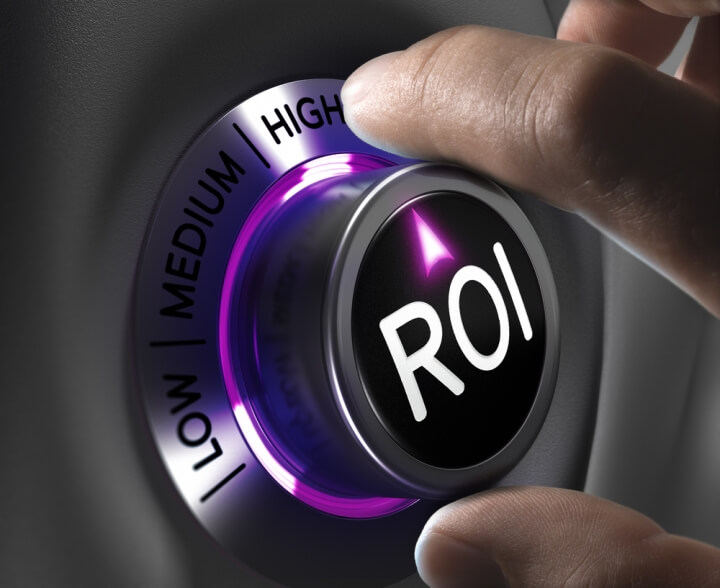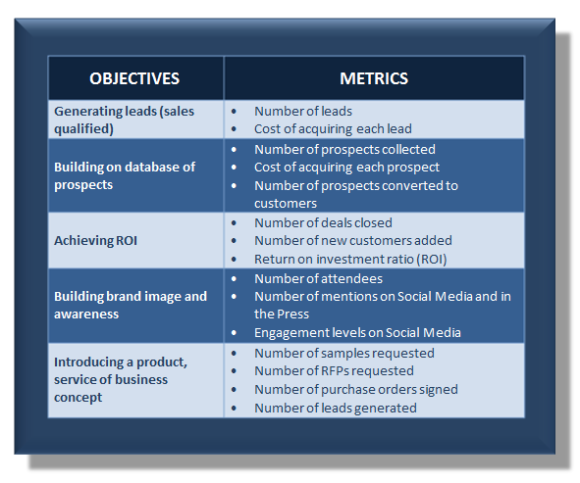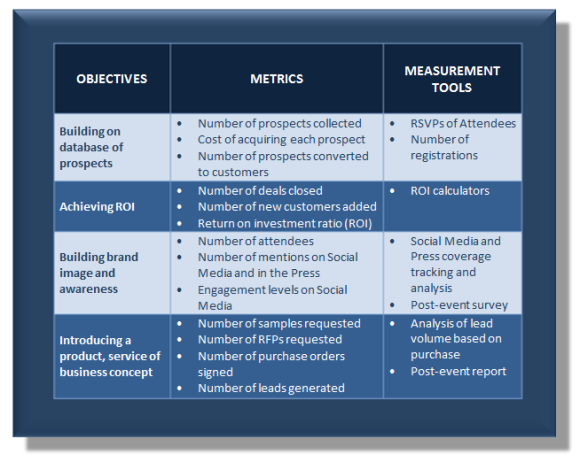
Quantify to Justify – 4 Steps to Measure Event Marketing ROI
In your overall marketing plan, you finally decide that it’s time to utilize event marketing. Whether your event is to generate leads, increase brand awareness or launch a product or service, there are important questions you need answers for before moving on…
- What are your primary and secondary event objectives?
- What are the metrics for each objective?
- What measurement tools are required to capture data?
- How will you calculate event marketing ROI?
Without answers to these questions, it will be a challenge to justify your event marketing spend and calculate revenues generated from your event. Here’s a simple, 4 step approach to measure event marketing ROI:
Step 1 – Set Objectives
The ideal way to measure event marketing ROI is to pre-determine objectives that are measurable. While, there may be several objectives for your event, it is recommended that you identify one primary objective and one or two secondary objectives to keep your efforts focused. Here are some of the objectives identified by marketers from event marketing:
- Generating leads (sales qualified)
- Building on database of prospects
- Achieving ROI
- Building brand image and awareness
- Introducing a product, service of business concept
Step 2 – Add Metrics to Each Objective
For each objective, you need to add metrics in order to make then quantifiable and measurable. Here are examples of metrics you could associate with event marketing objectives:
Additional Read: B2B Lead Generation Strategies For Financial Companies: What You Need To Know
Step 3 – Identify Data Capture for Each Metric
Once you have identified metrics for each objective, you need to know how you want to capture data and measurement tools required.
Step 4 – Measure Event Marketing ROI
With your objectives, metrics and data in place, you can now to approach the main aspect of calculating event marketing ROI. Here are some options:
· Formula 1 (Expressed as a percentage)
Event Marketing ROI = Gross Margin – Event Expense / Event Expense
To identify gross margin, you need to subtract variable costs incurred and direct sales costs from the event revenue. This formula is considered to be a more as it takes into consideration the total lifetime value of customers acquired at the event, instead of taking only the revenue generated immediately.
· Formula 2 (Expressed as a percentage)
Event Marketing ROI = Event Revenue – Event Expense / Event Expense
In cases where it is difficult to identify variable and direct sales costs, event revenue can be used to calculate ROI.
In both formulas, the ROI is indicated as a percentage. Wherein, zero represents break-even, negative percentage represents loss and positive percentage represents profitable ROI.
Additional Read: Why Integration of ERP and CRM Systems into Sales and Marketing is Important?
· Formula 3 (Expressed in dollars)
Event Marketing ROI = Sales Revenue / Total Event Expense
This formula is useful when you need to assess the number of dollars returned for every dollar spent. For instance, if you need to generate 15 dollars for every dollar spent, this formula will help you understand if you have achieved that objective. However, the result through this formula fails to address the profitability and overstates revenue values.
To improve your event marketing ROI, you need to adopt an organized approach through planning, capturing, collecting, measuring, analyzing and streamlining your event marketing process.
Here are Hard Stats for Hard Facts to Validate Event Marketing ROI
Check out this Infographic on







